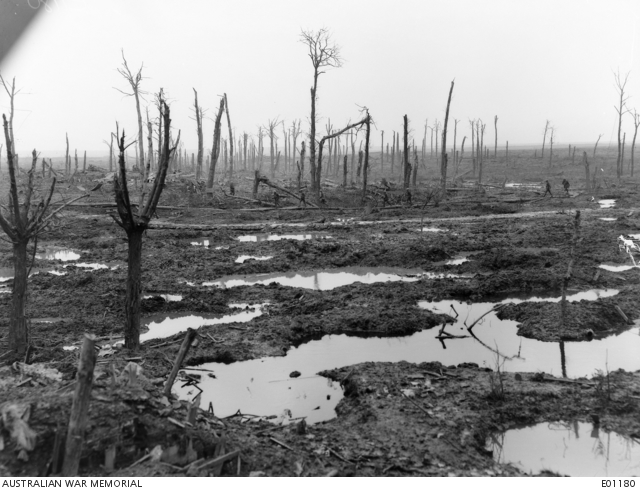This article is now available for free download….please click this link to access it.
This article will explore the experiences of the 25th Battalion, AIF who were subjected to a lengthy Mustard Gas attack whilst on the lower reaches of the Passchendaele Ridge during the last days of October and the first days of November 1917. The paper will briefly outline the development and deployment of chemical agents during the Great War, in particular Mustard Gas. It will then describe the events surrounding the battalion’s deployment between ANZAC and Garter Ridges during the last days of October and the constant barrage of Mustard Gas that it received.
The paper will then identify the almost 300 soldiers of the battalion that suffered injury due to their exposure to the gas. Utilising the individual service dossier for each of them, their journey through the evacuation and rehabilitation chain will be analysed and a detailed amount of data will be extracted and discussed concerning the duration of their incapacity and the effect this had on the effectiveness of the battalion for the next few months.
Specific individuals will then be selected for an in depth description of their injuries, their rehabilitation and their post-war lives to assess what continued impact these injuries had on the rest of their lives.
Various primary sources will be used including unit war diaries, service dossiers and Repatriation Department files.
This article will be published on 27 October 2017 to mark the centenary of the events described.

A general view of the battlefield at Hannebeek in the Ypres sector. In the foreground are the duckboard and corduroy tracks leading to Westhoek and Anzac Ridge 30 Oct 1917. Source: AWM

Gassed Australian soldiers lying out in the open at an over crowded aid post, May 1918. Source: AWM

Map of the Westhoek & ANZAC Ridges area, November 1917. Source: IWM
(J 2 & 3 bottom left)
